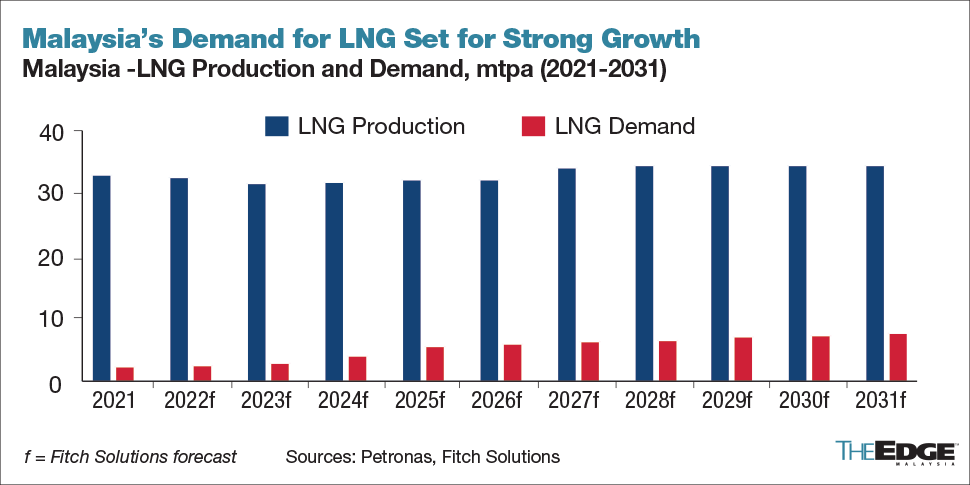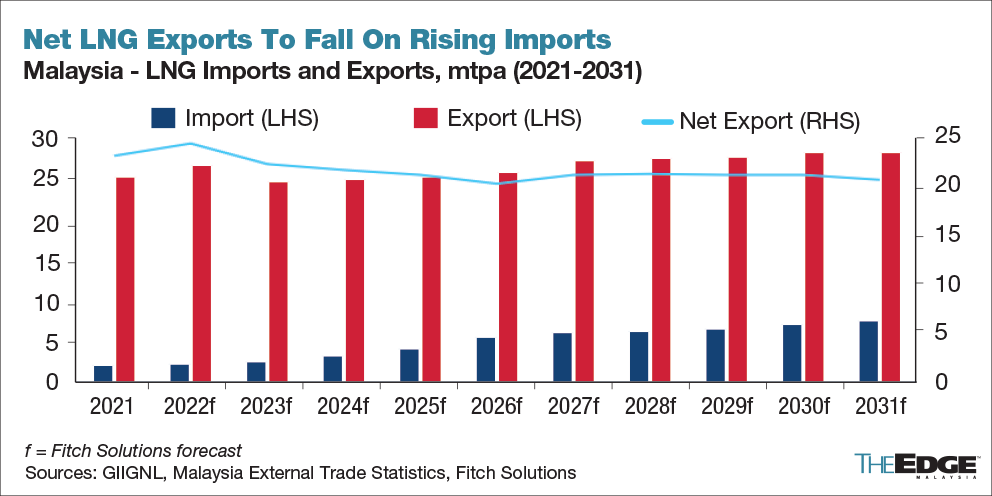
KUALA LUMPUR (Jan 16): Fitch Solutions Country Risk and Industry Research said the outlook for Malaysia’s long-term gas production remains positive in line with the start-up of offshore fields.
In a report last Friday (Jan 13), the firm said the long-term outlook for the share of liquefied natural gas (LNG) in Malaysia’s gas consumption mix points to an upside.
“Despite growing domestic demand for LNG, we anticipate Malaysia to maintain a high level of LNG exports in the near to medium term.
“We forecast Malaysia’s LNG imports to increase up to seven million tons per annum (mtpa) in 2030, with most of the incremental imports stemming from third-party LNG players,” it said.
Fitch Solutions said it anticipates upside risks to LNG supply due to a projected increase in LNG production capacity additions.
It said Malaysia’s LNG production is set to rise due to a combination of LNG production capacity additions and a potential increase in LNG production from the Bintulu plant.
The firm said floating LNG projects are literally changing Malaysia’s LNG landscape, because they are considered to be less capital-intensive and flexibile.
It said floating LNG vessels can be deployed to multiple gas fields, and monetise small stranded gas assets.
“The state-owned Petroliam Nasional Bhd (Petronas) and Sabah Oil & Gas Development Corp are going ahead with the third 2.0mtpa near-shore floating LNG project dubbed as ZLNG in Sabah, after they announced their final investment decision in December 2022.
“The ZLNG project, which is slated to come online by mid-2027, will raise Malaysia’s total LNG production capacity from 32mtpa in 2022 to 34mtpa in 2027.
“The outlook for Malaysia’s long-term gas production remains positive in line with the start-up of offshore fields,” it said.
Fitch Solutions said prospects for gas production in Malaysia are somewhat positive, as it expects Petronas to accelerate development of offshore gas fields intended for LNG production.
It said Petronas is developing the Kebabangan Phase 3 expansion project in Sabah, which is earmarked for LNG production from FLNG projects.
“We anticipate an uptick in LNG production from the Bintulu LNG plant, which would be fed by additional gas supplies of 550 million standard cubic feet per day from the Pegaga field.
“The Kasawari field, which is planned for development, will provide additional supply of feed gas for LNG production.
“Given the near-term upside to gas production from upstream projects, we expect to see a steady increase in gas supplies available for LNG production,” it said.


